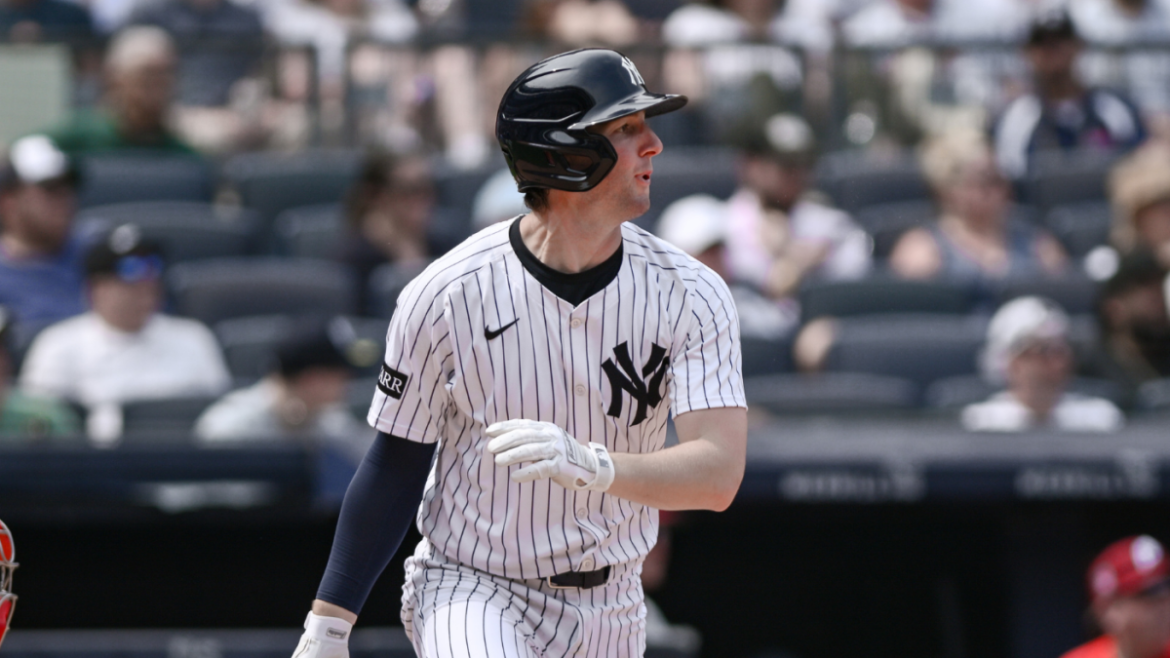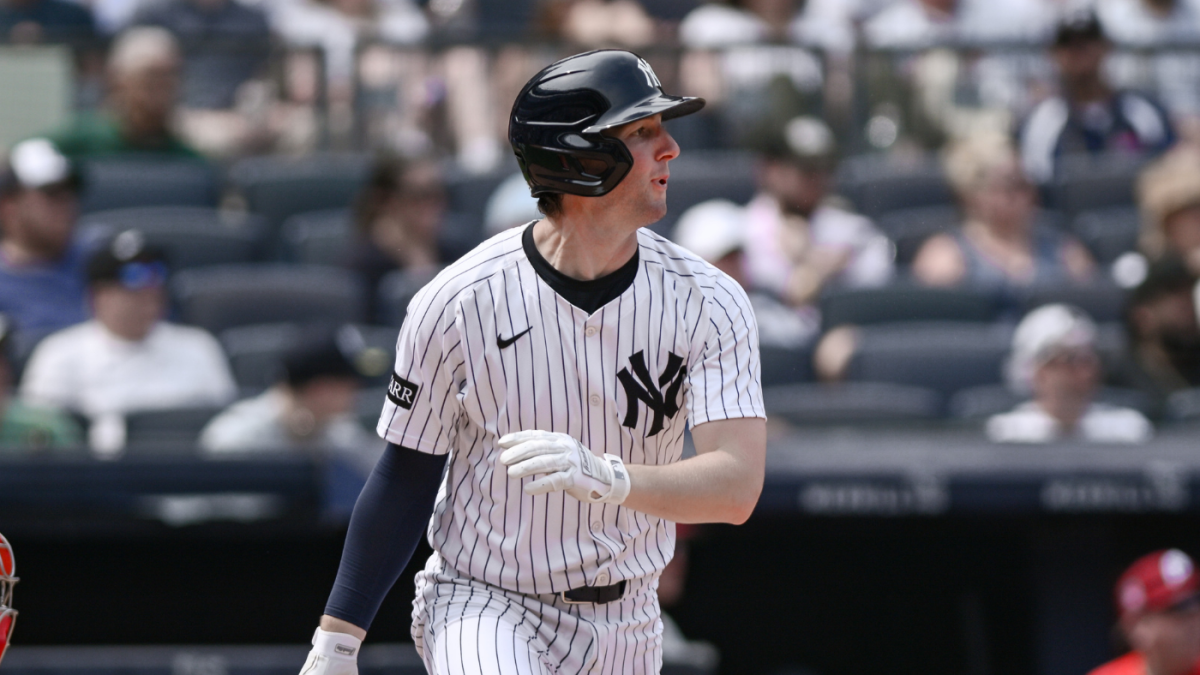The 2025 MLB Trade Deadline: A Season of Shifting Fortunes
Introduction
The MLB trade deadline is a pivotal moment in the baseball calendar, a time when the strategic chessboard of the league is rearranged with bold moves and calculated gambles. The 2025 deadline, which concluded at 6 p.m. ET on Thursday, July 31st, was no exception. This year’s deadline reshaped the competitive landscape, with contenders fortifying their rosters and rebuilding teams stockpiling prospects. The ripple effects of these transactions will be felt not only in the immediate standings but also in the long-term trajectories of franchises. This report delves into the key trends, notable trades, and the broader impact of the 2025 MLB trade deadline.
The Usual Suspects: Yankees and Mets in the Spotlight
The Yankees’ Quest for a Championship-Caliber Roster
The New York Yankees, a franchise synonymous with championship aspirations, once again demonstrated their willingness to make bold moves to bolster their roster. Their most significant acquisition was Ryan McMahon, a third baseman whose power, defensive skills, and veteran leadership were seen as crucial additions to their playoff push. McMahon’s arrival solidified the left side of the infield, addressing a long-standing need for the Yankees.
In addition to McMahon, the Yankees added Amed Rosario, a versatile utility player capable of filling multiple roles. Rosario’s ability to play multiple positions provided manager Aaron Boone with valuable flexibility, allowing him to optimize the lineup based on matchups and injuries. The acquisition of Austin Slater from the Chicago White Sox further deepened the Yankees’ outfield, providing much-needed cover and adding another dynamic bat to the lineup.
These moves underscored the Yankees’ commitment to winning now, as they continue to chase their next World Series title. The team’s willingness to part with valuable prospects and draft picks in exchange for established talent reflects their aggressive approach to contention.
The Mets’ Strategic Rebuild and Bullpen Reinforcement
The New York Mets, under new management, took a different approach to the trade deadline. While they did not completely dismantle their roster, they were strategic in their moves, focusing on long-term development and addressing immediate needs. Their most notable acquisition was Gregory Soto, a left-handed reliever from the Baltimore Orioles. Soto, a former All-Star with the Detroit Tigers, brought much-needed experience and a proven track record to the Mets’ bullpen, which had been identified as a significant area of weakness.
In exchange for Soto, the Mets sent Aracena, their No. 19 prospect, to the Orioles. This move signaled the Mets’ commitment to a rebuild, as they prioritized acquiring young talent over short-term gains. The acquisition of Soto was not just about immediate impact but also about sending a message to the organization and the fanbase that the Mets were serious about building a sustainable contender.
Beyond the Big Apple: Other Notable Moves
Mariners Strengthening Their Lineup
The Seattle Mariners, a team with playoff aspirations, focused on adding offensive firepower to their roster. Their acquisition of an unnamed player in the Josh Naylor deal highlighted their commitment to improving their lineup and increasing their chances of success in the postseason. The Mariners’ move was a clear indication that they were not content with simply making the playoffs but were aiming for a deep run.
Brewers Bolstering Their Catching Depth
The Milwaukee Brewers, known for their shrewd player development and strategic trades, made a move to bolster their catching depth. The acquisition of Danny Jansen provided the Brewers with a seasoned veteran behind the plate, adding stability to their catching corps. Jansen’s experience and leadership were seen as valuable assets, especially as the Brewers looked to make a playoff push.
Tigers Adding Pitching Talent
The Detroit Tigers, in the midst of a rebuild, continued to accumulate young talent. Their acquisition of right-handed pitcher Chris Rodriguez demonstrated their focus on developing a strong pitching staff for the future. Rodriguez, a promising prospect, was seen as a key piece in the Tigers’ long-term plans, as they aimed to build a competitive roster through the draft and strategic trades.
The Impact on Contenders and Rebuilding Teams
Contenders Going All-In
Teams like the Yankees and Mariners, with their sights set on a championship, made aggressive moves to improve their rosters. These teams were willing to part with valuable assets in order to acquire players who could make an immediate impact. The trade deadline served as a critical juncture for contenders, allowing them to address weaknesses and bolster their chances of reaching the World Series.
Rebuilding Teams Stockpiling Prospects
Teams like the Mets and Tigers, who are not currently in contention, used the trade deadline to acquire young, talented players who could contribute to their future success. These teams were willing to trade established players in exchange for prospects who have the potential to become stars. The trade deadline provided rebuilding teams with an opportunity to reset their rosters and build a foundation for long-term success.
Fantasy Baseball Fallout: Roster Reshuffling
The MLB trade deadline is not just a significant event for MLB teams; it also has a major impact on fantasy baseball leagues. The movement of players from one team to another can dramatically alter their fantasy value, forcing managers to adjust their rosters and strategies.
Winners and Losers
Some players see their fantasy value increase after being traded to a new team, while others see their value decrease. For example, a player who is traded from a rebuilding team to a contender may see his playing time and opportunities increase, leading to improved fantasy production. Conversely, a player who is traded from a contender to a rebuilding team may see his playing time and opportunities decrease, leading to decreased fantasy production.
Waiver Wire Frenzy
The trade deadline often triggers a flurry of activity on the waiver wire, as fantasy managers scramble to add newly acquired players and replace those who have been traded away. Smart fantasy managers stay on top of the trade news and act quickly to acquire players who have the potential to become valuable assets.
The Deadline’s Unsung Heroes: The GMs
While the players on the field capture the spotlight, the MLB trade deadline is a testament to the strategic acumen of general managers (GMs). These individuals, working tirelessly behind the scenes, navigate complex negotiations, evaluate player values, and ultimately make decisions that can shape the future of their franchises. The 2025 deadline saw GMs demonstrating creativity, risk assessment, and a deep understanding of their team’s needs and long-term goals.
The Lingering Questions: What Happens Next?
As the dust settles on the 2025 MLB trade deadline, several questions remain. Will the Yankees’ acquisitions be enough to propel them to a World Series title? Will the Mets’ rebuilding efforts pay off in the long run? Which prospects acquired at the deadline will blossom into stars? Only time will tell.
A Turning Point? The Shifting Sands of Power
The 2025 MLB trade deadline served as a crucial inflection point in the season. It solidified the positions of contenders, clarified the direction of rebuilding teams, and injected a fresh dose of excitement into the sport. While the immediate impact will be felt on the field as teams battle for playoff berths, the long-term consequences will resonate for years to come, shaping the competitive landscape of Major League Baseball. The 2025 deadline will be remembered not just for the players who changed uniforms, but for the strategic visions that guided those moves, and the shifting sands of power they represented.





